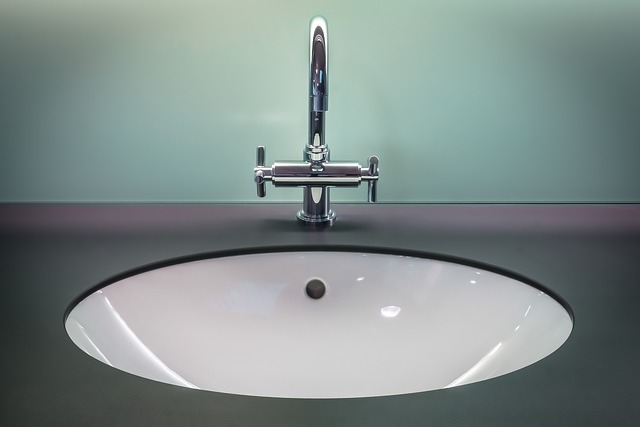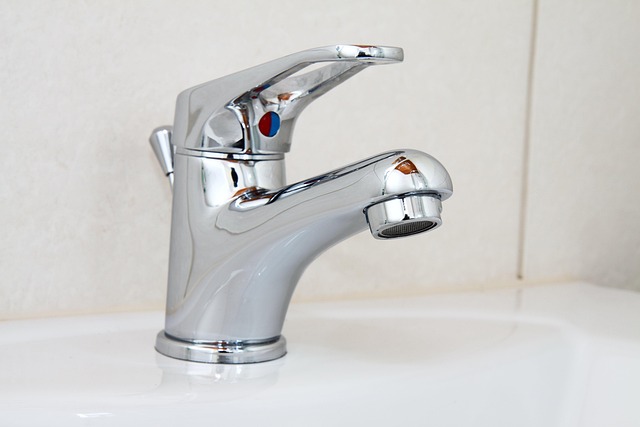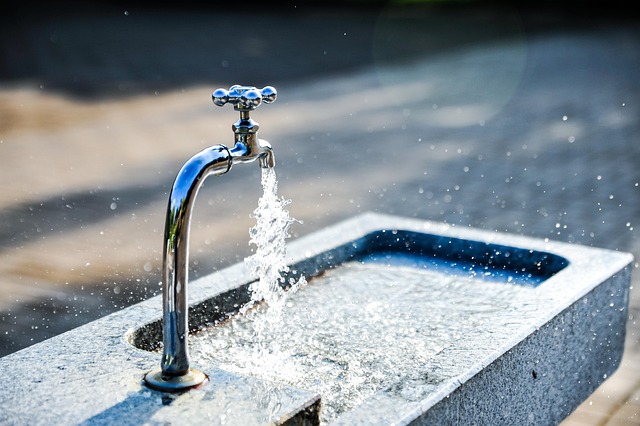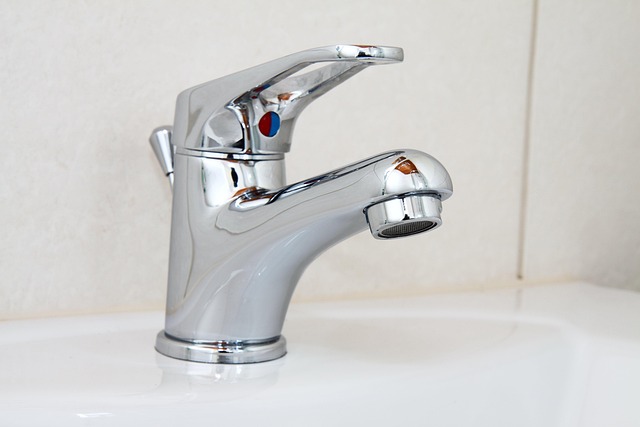Faucet repair is crucial for maintaining efficient water flow, minimizing waste, and preventing costly damage. Common issues like leaks, low pressure, and clogs can be addressed through simple DIY techniques with the right tools and materials, saving money and resources. However, complex problems require professional plumbers who use specialized tools to diagnose and fix severe leaks, pressure issues, and broken parts. Regular maintenance, including inspection, lubrication, cleaning, and replacement of components, prevents emergencies and ensures optimal faucet performance. Homeowners can opt for DIY repairs for simple tasks but should seek professional help for complex scenarios, as plumbers offer reliable solutions faster and with easier access to necessary parts.
Looking to tackle that leaky faucet yourself? You’re not alone. Faucet repairs are one of the most common DIY projects, offering a straightforward solution to a frustrating problem. This guide breaks down everything you need to know about fixing your faulty fixtures. From identifying common issues and gathering essential tools to following step-by-step instructions for both leaks and broken handles, we’ll equip you with the knowledge to get the job done efficiently. Plus, learn when it’s best to call in a professional plumber and discover cost-saving tips for maintaining your faucets long-term.
Understanding Common Faucet Issues

Many faucet issues stem from simple wear and tear, but others may indicate more serious problems. Leaks, for instance, can range from a minor drip to a gushing flow, often caused by damaged O-rings or cartridges. While a persistent drip might seem harmless, it can lead to significant water waste over time. Another common issue is low water pressure, which could be due to mineral buildup in the faucet’s aerator or a partial clog in the pipes. Clogs are another frequent problem, typically caused by foreign objects like hair, food particles, or even small toys getting caught in the drain.
Identifying these issues early on is crucial for effective faucet repair. Homeowners can take simple steps to maintain their faucets, such as regular cleaning and unclogging. For more complex problems, however, professional intervention may be necessary. A skilled plumber can quickly diagnose and fix leaks, pressure issues, or severe clogs, ensuring your faucet operates smoothly and efficiently once again.
Tools and Materials for Faucet Repair

When tackling emergency faucet repairs, having the right tools and materials is crucial for a successful fix. The most common tools needed include adjustable wrenches, pliers, and a new faucet repair kit, which typically includes O-rings, washers, and seals. These tools allow you to disassemble the faulty faucet, replace worn-out parts, and ensure proper sealing to prevent leaks.
For effective Faucet Repair, gather essential materials such as pipe compound or thread sealant, teflon tape, and a new faucet handle if the existing one is damaged beyond repair. The teflon tape is crucial for threading connections, providing a watertight seal and preventing future leaks. With these tools and materials in hand, you’ll be well-equipped to address minor faucet issues promptly and efficiently.
Step-by-Step Guide to Fixing a Leaking Faucet

Fixing a leaking faucet is an easy DIY task that can save you money and prevent unnecessary water waste. Here’s a step-by-step guide to tackle this common home issue. First, gather the necessary tools: adjustable wrenches, pliers, replacement washers (check your faucet model for compatibility), and a new O-ring or gasket if needed. Turn off the water supply by closing the valves under the sink. This is usually done clockwise with a wrench or key. Once the water is cut off, you can safely disassemble the faucet without worry of leaks. Remove the handle and any decorative caps to access the internal parts. Identify the culprit: it’s likely a worn-out washer or damaged O-ring causing the leak. Replace these components with new ones, ensuring proper alignment for a secure fit. Reassemble the faucet, tightening all parts gently but firmly with pliers or wrenches. After reassembly, turn on the water supply and check for leaks at every connection point. If there are no leaks, your faucet is now fixed!
Handling Broken Faucet Handles and Spouts

Broken faucet handles and spouts are common issues that can disrupt your daily routine and lead to unnecessary water waste. If you encounter a faulty faucet, it’s best to address the problem promptly. The first step is to identify the type of repair needed; it could be as simple as tightening loose parts or replacing worn-out components. Many modern faucets come with easy-to-follow repair manuals, making these tasks more manageable for homeowners.
When handling broken handles, check for common issues like stripped threads or damaged screws. A simple solution is to use thread tape or pipe compound to create a secure seal and prevent leaks. For spouts, inspect for cracks, corrosion, or loose connections. Replacing the spout may require disassembling the faucet, but many repair kits offer step-by-step instructions, making faucet repair a feasible DIY project.
When to Call a Professional Plumber

If you’ve tried basic troubleshooting techniques and found yourself still facing issues with your emergency faucet, it’s time to consider calling a professional plumber. While some minor faucet repairs can be tackled as DIY projects, more complex problems often require the expertise of a licensed plumber. They have the specialized tools and knowledge to diagnose and fix stubborn leaks, clogs, or broken parts efficiently.
Professional plumbers are equipped to handle various faucet repair scenarios, ensuring your emergency fixture is restored to its full functioning capacity. From replacing worn-out O-rings and aerators to repairing damaged pipes or fixing complicated valve mechanisms, they can tackle it all. Remember, delaying necessary repairs might lead to further damage and increased costs, so don’t hesitate to reach out to a plumber when faced with persistent faucet problems.
Preventative Maintenance Tips for Faucets

Regular maintenance is key to preventing emergency faucet repairs. A simple routine can go a long way in keeping your faucets in top condition. Start by inspecting them regularly for any signs of damage or leaks. Even minor issues like a tiny drip can indicate a potential problem. Lubrication is another important step; apply a small amount of grease or silicone spray to the faucet’s seals and moving parts to ensure smooth operation.
Additionally, keep an eye on the faucet’s cartridge and aerator. These components are crucial for water flow and temperature control. Over time, they can become clogged or worn out, leading to reduced water pressure or even a complete stop of the water supply. Regular cleaning and replacement can prevent these issues. Remember, preventative measures are always more effective (and less costly) than emergency repairs.
Exploring DIY vs Professional Faucet Repair Costs

When faced with a leaking or malfunctioning faucet, homeowners often grapple with the decision between tackling the repair themselves (DIY) or hiring a professional plumber. The choice can be influenced by various factors, not least of which are the costs involved. DIY faucet repairs can be significantly cheaper, especially for simple issues like loose connections or clogged aerators. Online tutorials and how-to guides make it accessible for folks with basic handyman skills to fix these common problems without breaking the bank.
However, more complex faucet repair scenarios, such as replacing worn-out parts, fixing damaged pipes, or dealing with hard water buildup, may require specialized tools and knowledge. In such cases, professional plumbers offer a more reliable solution. While their services might come at a higher cost, they ensure quality repairs that can save you from future issues. Plus, they often carry the necessary parts and equipment, making the process faster and more efficient compared to sourcing supplies separately and attempting a DIY approach.
